Understanding and Selecting Heat Exchanger Cleaning Techniques
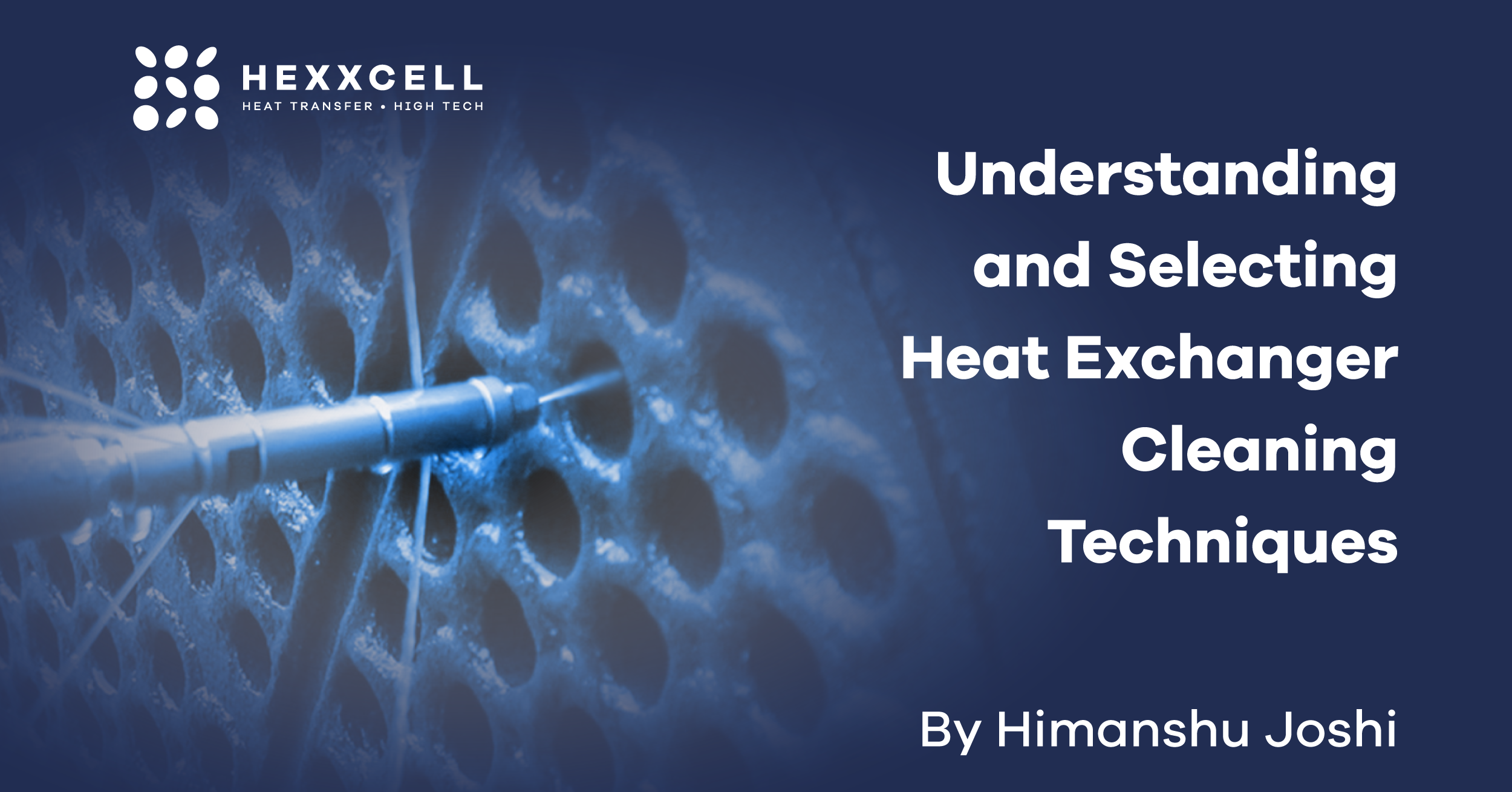
Maintaining heat exchangers in a clean condition is crucial for economic efficiency. There are numerous cleaning techniques to choose from and the cost and effectiveness of these methods can vary considerably. In cases where heavy fouling of the heat exchanger has led to substantial economic losses or the cleaning procedure proves costly, it is beneficial to assess the overall cleaning expenses. These include the potential costs associated with subpar cleaning results. This article presents an insight into three cleaning techniques, their associated costs, and the implications of ineffective cleaning.
Hydroblasting
This traditional cleaning method involves the use of high-pressure water to remove fouling from the tube surface. It necessitates the removal of the tube bundle from the shell and the disposal of the contaminated water.One significant drawback of hydroblasting is its inability to achieve zero-fouling condition, often due to insufficient reach or force of the water onto all fouled surfaces.
Chemical Cleaning
This technique comprises the circulation of oil or water-based chemicals to dissolve and mechanically remove fouling. It offers certain benefits over hydroblasting –the bundle does not need to be extracted from the shell, cleaning can be done for multiple heat exchangers in the loop, and both the tube and shell can be cleaned simultaneously. However, this method can range from low-cost (minimum circulation time with low flow), to a longer circulation time, high-flow and therefore a more expensive procedure. High-end chemical cleaning has been shown to match hydroblasting in effectiveness and costs about the same per heat exchanger when multiple units are cleaned. Chemical cleaning requires additional piping connections and external apparatus (like pumps and filters) to provide circulation, and it generates chemical waste which must be disposed of.
Ultrasonic Cleaning
This method involves immersing the tube bundle in a chemical-infused water bath and cleaning it using the force generated by ultrasonic bubbles on the tube surface. It provides greater cleaning effectiveness in a shorter duration by combining the benefits of hydroblasting and chemical cleaning. The superiority of this method over the others will be demonstrated later in this article.
Table 1 summarizes the key aspects of these three methods. The cleaning effectiveness row indicates the percentage of the heat duty immediately after cleaning relative to a zero fouled heat exchanger - a 100% score indicates a completely clean, or zero fouled, condition. The relative total cost includes all cleaning-associated expenses, and the cleaning duration indicates the time taken for the cleaning process – whether it's the circulation time for chemicals, hydroblasting time, or the duration in the ultrasonic cleaning bath.
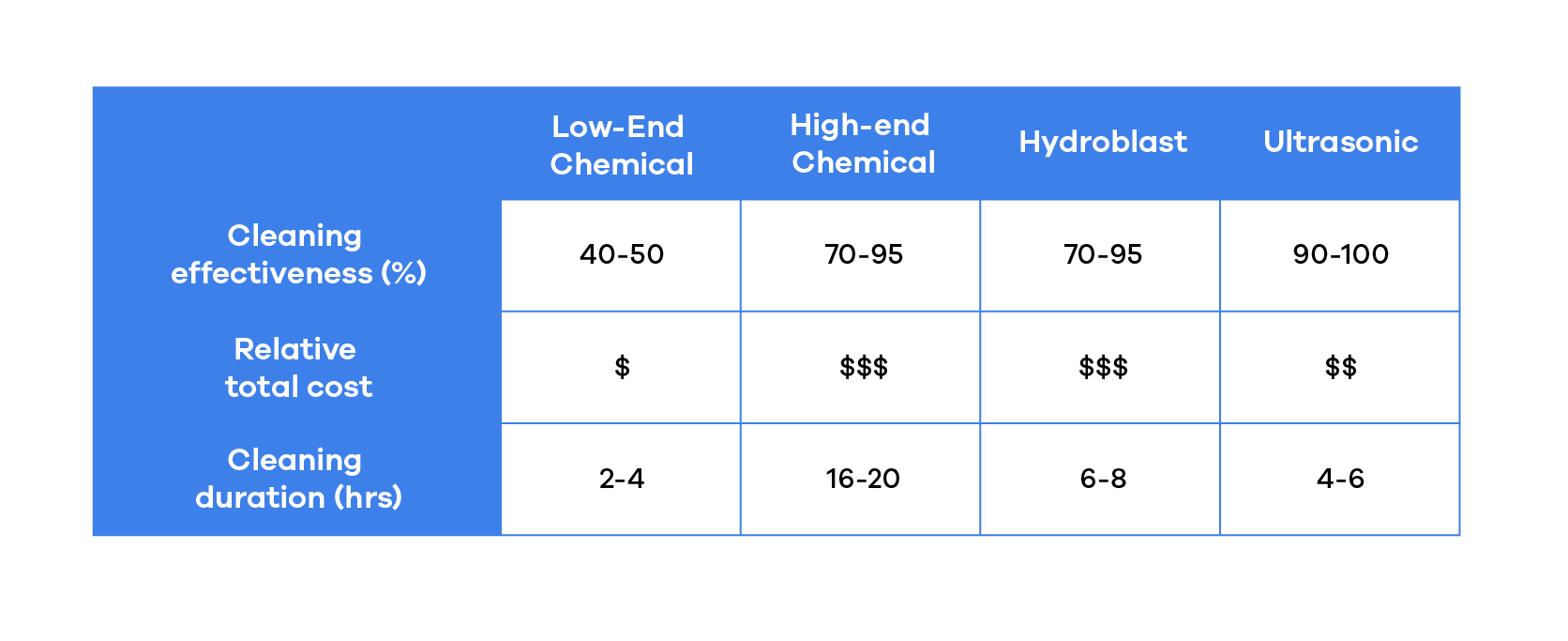
Breaking Down Cleaning Expenses
Apart from the remuneration paid to the cleaning contractor, there are several other components which contribute to the total cleaning cost. Table 2 outlines the different costs and their respective magnitudes, showing a zero where the cost is irrelevant to that particular method.
These costs fluctuate over time andare especially dependent on location. This table is as an essential tool to ensure no costs are overlooked when deciding cleaning timelines and methods. Two commonly disregarded costs are the ones related to incomplete cleaning of a heat exchanger and the subsequent repeated cleaning to ensure that inspection cleanliness standards are met. Moreover, multiple heat exchangers can benefit from chemical cleaning at once, reducing the cost per exchanger.
From our experience, chemical cleaning eliminates costs associated with tube bundle extraction, transport, and reinstallation but introduces expenses for setting up piping connections and purchasing chemicals. However, the actual cost of chemical cleaning per exchanger might be less than depicted, hinging on the type of equipment and protocols used. The table also reveals that the average recleaning expenses can be high for hydroblasting, while negligible for other cleaning techniques. Additionally, waste disposal costs are lower with ultrasonic cleaning as it reduces chemical waste production by approximately 75%.Importantly, the cost of incomplete cleaning can be severe for hydroblasting and chemical cleaning, but is zero for ultrasonic.
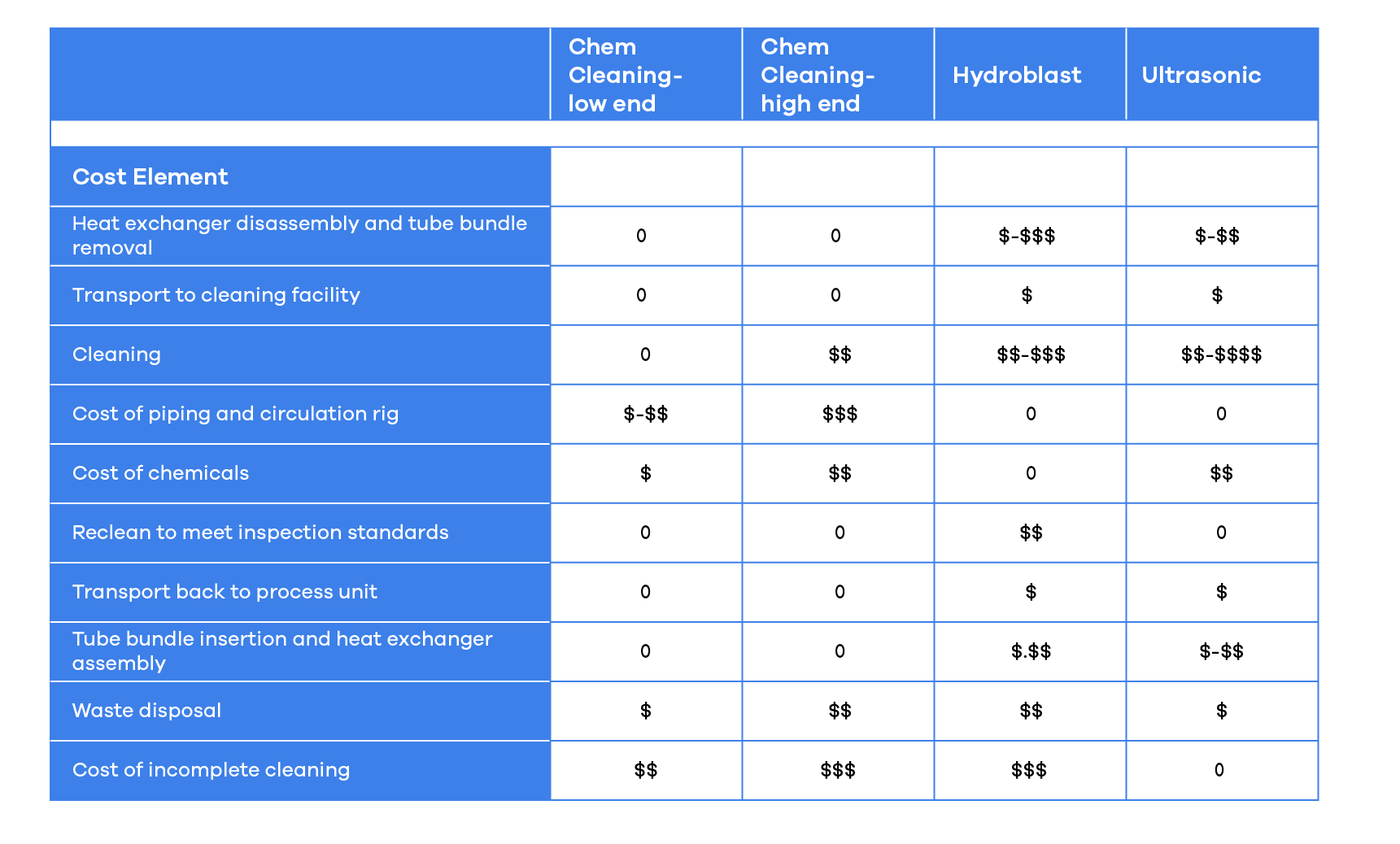
The Cost of Incomplete Cleaning
An incomplete cleaning of a heat exchanger refers to a scenario where the performance of the cleaned equipment does not achieve a 100% clean state. This means that the heat duty right after cleaning(Qa) does not match the level of a completely clean, zero-fouled heat exchanger(Qc); hence (Qa/Qc) < 1.0.
Table 3 presents the analysis results of operating heat exchangers after hydroblast and ultrasonic cleaning.Each row deals with the same heat exchanger, with simulated operational data following each cleaning method.
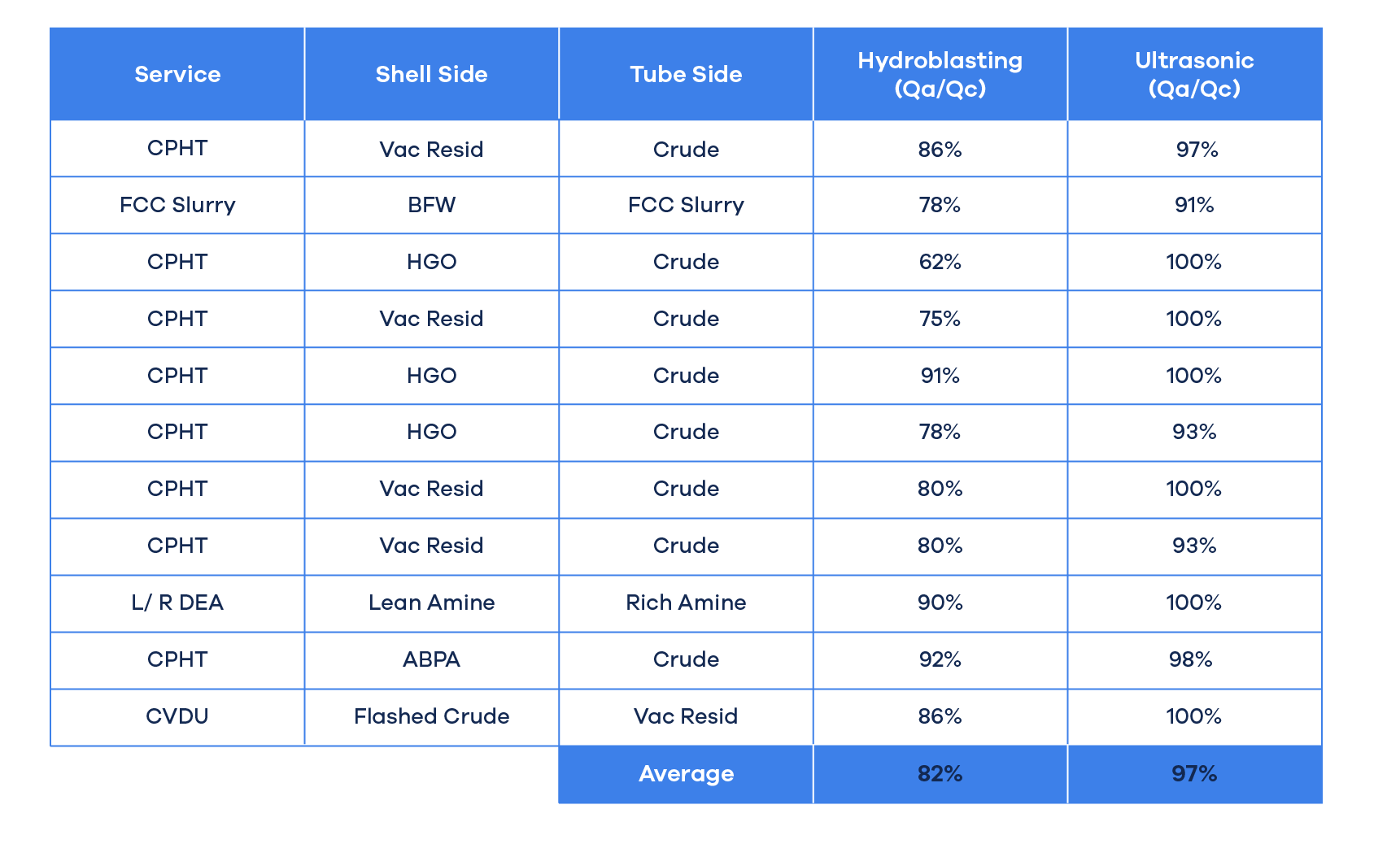
Ultrasonic cleaning produces an average cleanliness that is roughly 15% more effective.
To gauge the impact of incomplete cleaning, simulations of two heat exchangers, assuming a high fouling crude as the fouling liquid, were conducted. Fig. 1 represents a heat exchanger with a surface area of 500 m2, while Fig.2 relates to a unit of 875 m2. These figures demonstrate the degradation of heat duty due to fouling across a one-year time frame.
Qa represents the heat duty beginning with 100% clean, Qa' signifies starting at 85% clean, and the space between the two curves represents the loss incurred due to incomplete cleaning. The loss in Fig. 1 is equivalent to 3,250 MWh, in Fig. 2it is 11,620 MWh. With $2.84/GJ as the energy cost and $8.40/ton for CO2, these MWh values result in expenses of $40k and $140k for the respective heat exchangers.
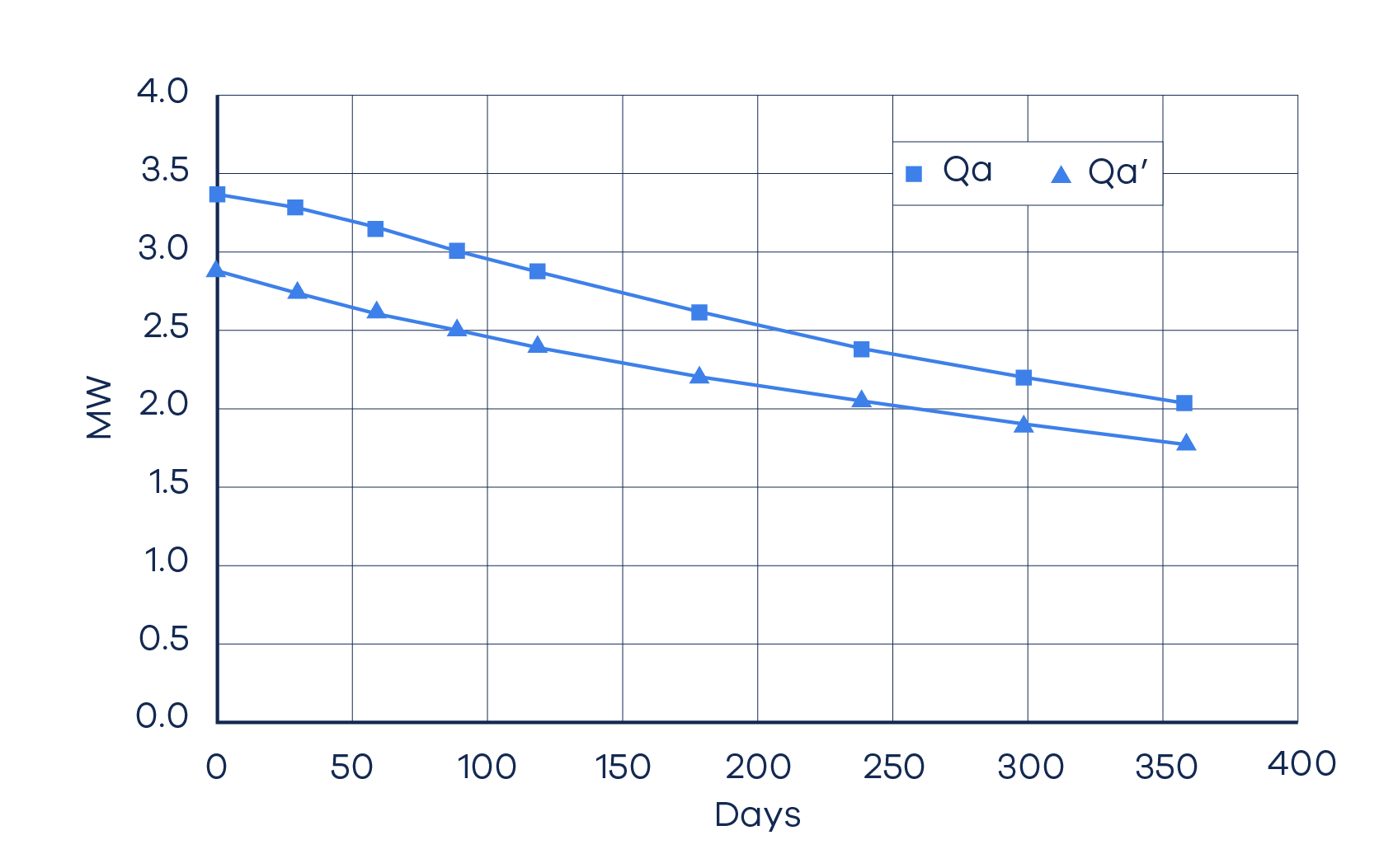
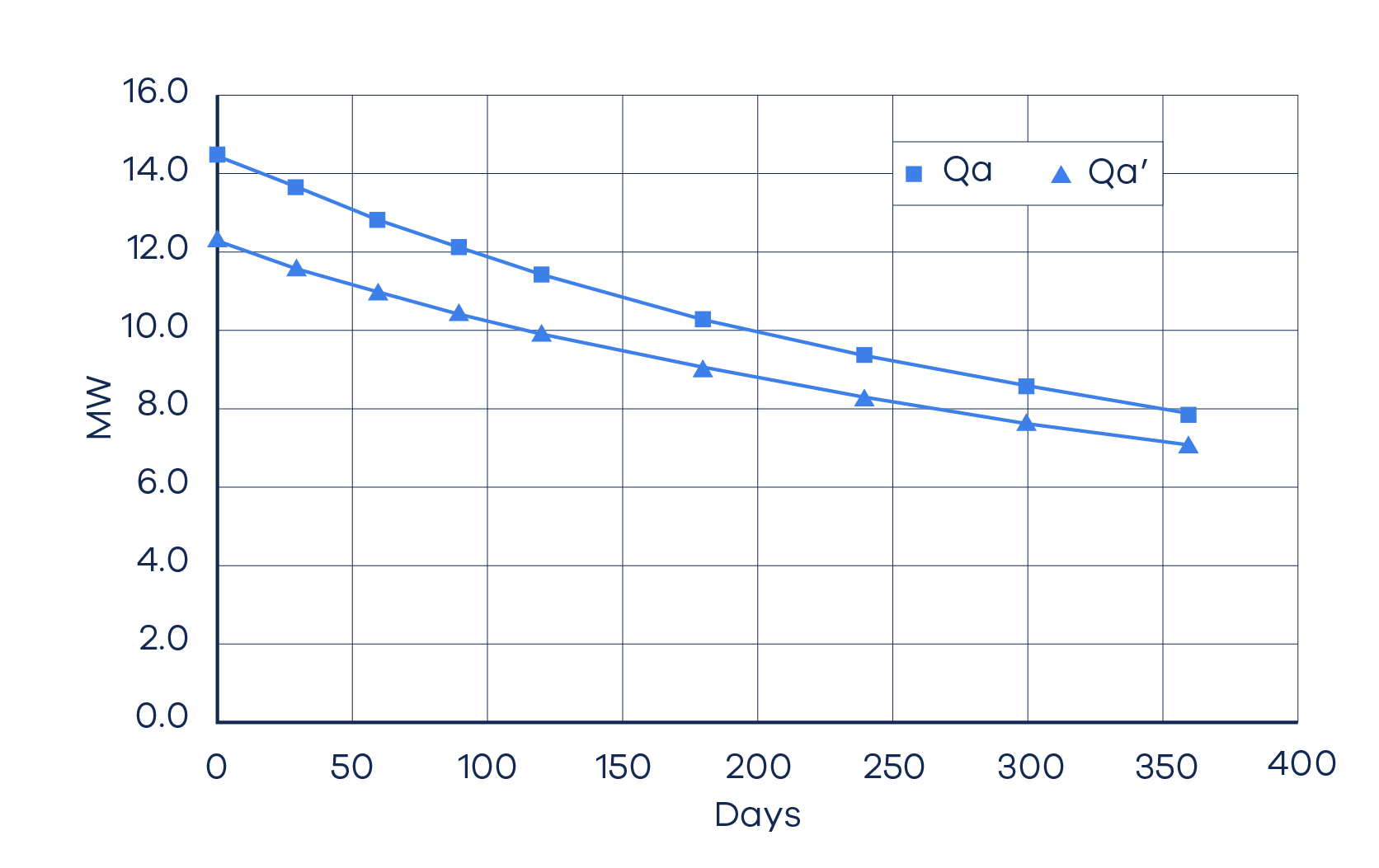
Conclusion
Heat exchanger cleaning can be undertaken using a variety of techniques, each carrying a different impact on cost and efficiency. To ensure that the total expense of cleaning is kept at a minimum, it's crucial to consider all associated costs, not only the immediate payment for the cleaning activity. A cost that might frequently be underestimated but can carry a significant impact is the one arising from reduced heat duty due to incomplete cleaning.
In the Upcoming Article
In the next article, we'll be examining the financial implications of fouling, including how to assess different mitigation techniques for the most beneficial outcome.
